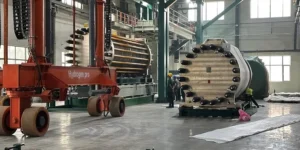California places near-$130m order for six more hydrogen trains for intercity lines

The California Department of Transportation (Caltrans) has signed a $127m order for six hydrogen trains for intercity railways with Swiss manufacturer Stadler.
This adds to an $80m contract for four units signed in October last year, which included an option to increase the total number of trains on order to 25.
Both orders were funded from a $10bn zero-emission vehicle package passed by California’s state government in 2022, of which $407m had been allocated to the purchase or lease of clean bus or rail infrastructure.
Caltrans plans to start operating its hydrogen trains in 2027, with the first units on a line between Merced and Sacramento, which are more than 100 miles apart, on a “Valley Rail” extension of the existing Altamont Corridor Express and Amtrak San Joaquins lines.
Stadler has already delivered the first H2 trains, its hybrid Zero-Emission Multiple Unit (ZEMU) rail vehicle running on both a fuel cell and a battery, to the San Bernardino County Transit Authority, which plans to build a hydrogen refuelling and storage facility and start operating the trains by the end of this year.
Stadler’s CEO last year commented to the press that while most routes in Europe have few sections without overhead lines that stretch more than 80km — ie, outside the range of batteries — the US could present a larger market for hydrogen trains given non-electrified routes can be hundreds of kilometres long.
California is also investing in electrification of its railways. Commuter railway operator Caltrain is currently in the process of testing its newly electrified corridor between San Jose and San Francisco, construction of which started in 2017 and took more than $2bn, with services due to start running in autumn this year.
Trains running on overhead lines are generally expected to be cheaper to operate than green hydrogen-powered units, given fewer efficiency losses from directly using electricity compared to producing, transporting and storing H2. However, some rail operators have raised that electrification can take years to complete, with zero-emission trains still needed in order to meet short-term climate targets.





